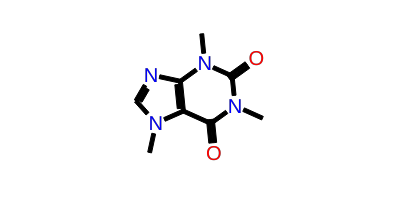- Resources
Recent Activities
Plants Gallery
Downloads
Worldwide, there are plants known as psychoactive plants that naturally contain psychedelic active components. They have a high concentration of neuroprotective substances that can interact with the nervous system to produce psychedelic effects. Despite these plants' hazardous potential, recreational use of them is on the rise because of their psychoactive properties. Early neuroscience studies relied heavily on psychoactive plants and plant natural products (NPs), and both recreational and hazardous NPs have contributed significantly to the understanding of almost all neurotransmitter systems. Worldwide, there are many plants that contain psychoactive properties, and people have been using them for ages. Psychoactive plant compounds may significantly alter how people perceive the world.
Compound Summary
CAS ID |
58-08-2 |
||
INCHI KEY |
RYYVLZVUVIJVGH-UHFFFAOYSA-N |
||
MOLECULAR WEIGHT |
194.19 |
||
MOLECULAR FORMULA |
C8H10N4O2 |
||
MOLECULAR MASS |
194.080 |
||
BIOLOGICAL SOURCE |
Component of coffee beans (Coffea arabica), many other Coffea spp., chocolate (Theobroma cacao), tea (Camellia thea), kolanut (Cola acuminata) and several other Cola spp. and several other plants. Also occurs as a fungal metab. of Amorosia littoralis and |
||
DATA SOURCE |
Dictionary of Natural Product. http://dnp.chemnetbase.com. | ||
CHEMICAL CLASS OF COMPOUND |
Imidazopyrimidines |
||
NLRP3 DOCKING SCORE(Kcal/mol) |
-4.577 |
||
CANONICAL SMILES Cn1c(=O)c2c(ncn2C)n(C)c1=O
|
|||
BIOACTIVITY REPORTED FOR NEURODEGENERATIVE DISEASES
Yes
|
|||
SYNONYMS |
3,7-Dihydro-1,3,7-trimethyl-1H-purine-2,6-dione, 1,3,7-Trimethylxanthine, Cafipel, Coffeine, Guaranine, Methyltheobromine, Theine, FEMA 2224, Many other names |
||
